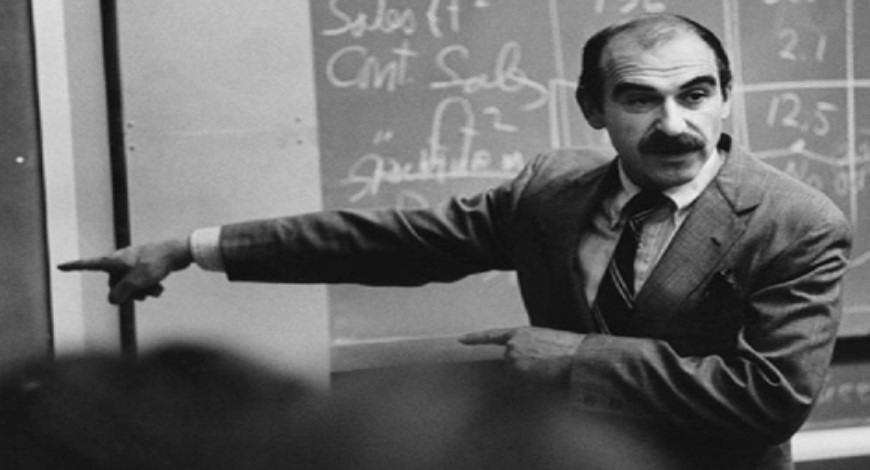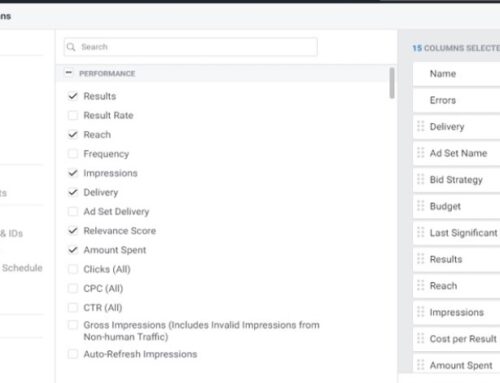Energy cannot be created or destroyed
The universe is made out of atoms and energy. For there to be life there must be energy. Energy cannot be created or destroyed. Only transferred from one form to another. This is the fundamental law of physics. All life in this universe must adhere to it. Nobody can be exempted.
Everything is a constant transformation and nothing is being “created”.
For you to survive, you will need to consume food (energy) from beasts. Then with energy, you convert it to do useful things. For any businesses to survive and thrive, the same old concept underlies.
Because nothing in this universe can be exempted from the laws of physics. This same is true to marketing.
Markets cannot be created or destroyed. Customers are not created, only converted. Customers will transform like energy particles; by buying from you today then being convinced to shop from your competitors.
It is ebb and flow. Like the mug beside me right now, it fills and empties throughout the day. The essence of flow magnifies all aspects of life and also marketing. In and out, to and fro, up and down, fullness and emptiness. Everything must flow, in a virtuous (or vicious) cycle called life.
Anything that is static is essentially dead. Even the oak tree that looks stationary on the surface is constantly expanding its roots into the ground, constantly sourcing for every bit of water or nutrients. The inner mechanisms are working all day.
Your customers are not created
As the laws of the universe can be applied to marketing, your customers are not created.
They already exist, just as one form or another. These are your competitor’s customers, customers living in your adjacent industries, and people who here now but not aware of you. Through good advertising, you can switch on the mighty funnel of life and start transforming some users into customers.
Transformation is always taking place. And that is how markets usually come and go. The railroad business got driven into obsolete by airplanes, buses, and trucks. Their customers essentially converted from the old ways of transport into the newer and faster way of transport.
The hand-phone got driven into obsolescence in the early 2000s by the advancement of smartphones. The customers quickly adopted and transformed into smartphone users.
Huge department stores are driven into extinction right now because of the flank attacks by smaller and more specialized stores. Examples like Footlocker, Victoria’s Secret, Toys ‘R’ Us.
The next concept I want to share is that; each brand may be different but essentially they are all the same.
In every market, the final analysis of the product being sold is the same
You heard it right, it is the same. The generic product is always undifferentiated. If you are a steel manufacturer, then your product is steel. If you own a seafood place, your product might be the lobster. Your competitor also owns a seafood place, and he also puts lobster on his menu.
Both of your products are similar in essence since every lobster comes from the sea.
To the grain producer in china, he’s livelihood is the wheat. His competitor’s livelihood is also the wheat. And the wheat grows from the ground. They all sell the same generic product.
But no business can make it with the generic product itself. They must augment it.
This is where the two generic products start to diverge.
When you do advertising, whether its on social media or on search engines or on TV. You are basically augmenting your product. Even though in the final analysis, you are selling the same generic commodity as your competitors, but they should choose you over them because of your augmentation. Maybe it’s a different way of preparation or having a better refinery.
Types of Augmentation
To augment something means to; make (something) greater by adding to it; increase.
Your product’s pricing, the payment options, the types of equipment, the manufacturing process, the country of origin, the reputation, the salesmen that sell your products, your delivery method, your delivery speed, your special promises, your style of marketing are all types of possible augmentation you can do to a generic product.
This same method has been done since the first merchant sold anything on the planet. That is how many generic products get compared and differentiated.
It is because of these variables that competitors differentiated away from each other and begin to defend their ‘turf’.
An old banking establishment like J.P. Morgan markets its age-old culture and history. But an upstart bank might market its speed and freshness.
Second thing.
Every brand lives or dies by its image
If we were to hop into a hyperbolic time chamber that is able to wipe out everybody’s concept of Coca-Cola, the company would not be worth a lot.
Coca-Cola is worth billions not because of its sales, or superiority of its product. But because of its image and concept built in the minds of millions.
It is simple to prove this theory.
If the company was to make toothpaste tomorrow and manufacture it out by the millions with the same name and logo slapped over it, it will not sell!
It simply won’t and is equally powerless as any new brand! Because Coca-Cola doesn’t stand for toothpaste, therefore there is a disconnect inside the minds of millions.
Every brand lives and dies by its image. As long as it continues to churn out that dark-brown liquid, it will stay successful.
Competitors that don’t distinct themselves will have to compete on price. Any business can fight on price, but how low can you go until its no longer profitable to stay in your business?
Customers pay attention to price, and most will take action when you promote a sale. It is usually for that short period of time, but its long-term effects on the brand are downhill.
Your brand can never go up by having discounts and promotions most of the time. You sacrifice its future for short-term profits.
The world is governed by law of compensation
Putting your brand on discounts increases short-term sales and decreases long-term value. You find no way to go around the system because it is governed by a law. Putting up short-term sales on your brand always diminishes long term brand equity.
You can’t get something for nothing. For every action, there is an equal and opposite reaction.
The problem starts when the customer gets used to buying your product on sale price.
Your sale price slowly becomes your standard price. And when your promotion ends, your ‘normal price’ no longer seem acceptable, and your consumers ditch you faster than a sinking titanic.
All brands and businesses should take careful note of the above. Because it is true and will always work in any circumstances!
Imagination and augmentation
Brands and businesses must use their imagination to augment themselves from their competitors. Through historical studies of the most enduring businesses, this is generally the way to long term growth.
Thus, with imagination, you can create a strong image for your brand. Then hone it into the minds of your customers through superb consistency. The most successful running ads on TV have been running the same thing message for 10-20 years.
Short, simple and precise copy, you can own a strong differentiation factor in your market.
Find your marketing imagination by reading your competition, as I explained that customers are the life of a business, it is the life of any business.
But most businesses are too focused on customers, they are too customer-orientated. The issue is that some businesses get overly sensitive to every customer’s wants and wishes.
Brands will benefit more from being competitor-first.
Remember what I said earlier; customers are not created but converted. Your potential customers come from your competitors’ turf and adjacent industries.
Most businesses are busy trying to create new customers when it is running against the fundamental laws of physics. How do we create customers, the fact is that we can’t, we can only convert them.
It is like running an advertising campaign to promote your business. The user clicks on your ad, reads your landing page and decides or not he converts and becomes a customer.
Since customers can only be converted then every winning business should be competitor-orientated. More on the competition aspect of the game in a future post.
Importance of a brand identity
Often when you become too customer-orientated, you find that your brand starts to lose its direction. Because you will soon find out that you cannot please everyone. The more you try to appease the more dysfunctional your brand becomes, you will lose the consistency in your brand image and initial company objectives.
A business should satisfy customers’ needs and wants, but a line must be clearly drawn.
If a business does not draw this line, it will risk being seen as ‘directionless’. This lack of focus almost certainly kills any business in the long run.
Every business run better when held down by an identity. They stand for something and will not compromise anything for it.
Since no business can appeal to every market segment, it is forced to settle on a few of them. If you sell laundry detergent you might want to market only to physical labor jobs where it promises to clean the toughest stains on clothes.
You cannot then market to someone who owns a sedentary job like inside an office, which would never really have the chance to get “tough stains” on their clothes.
And its job is to aggressively cater and dominate to its segments, then ignoring or even alienating the rest.
Companies that operate with imagination will augment their products to stand for something that will build the most irresistible bridge in connection with their customers.





